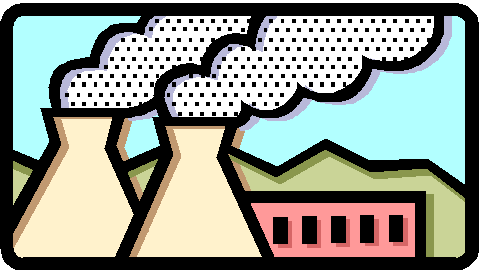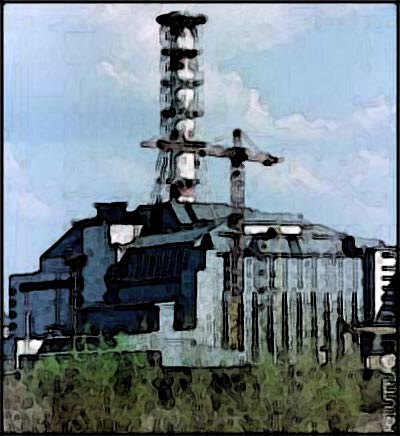Common Radioactive Items
Radiation Is All Around You...Ketchup left overnight on dinner plates has a longer half-life than radioactive waste. - Wes Smith
Radium dial, glow-in-the-dark watch and clock faces and compasses, especially those painted in the first half of the 20th century contain large amounts of alpha and gamma emitters that can raise the count rate by 10 to 20 times or more next to the watch. Rates from a night table alarm clock manufactured in the 50s emit about 40 counts per minute a foot in front of the glass cover. Recently, a fad in jewelry has led to the use of bare watch faces and other parts from broken watches combined as pins or brooches. Some of these have the radium containing paint on them and are quite dangerous. The paint could flake or rub off and be inhaled or eaten. Watches manufactured since the mid 1960's use tritium, H3, a radioactive form of heavy hydrogen, with a half-life of 12.26 years or Promethium-147, a totally man-made radioactive element with a half-life of 2.64 years. Both of these elements are weak beta and gamma emitters and cannot send many particles beyond the cover glass of the watch. However, greater quantities of these elements must be used to make the same amount of light from luminous paint.
Cerium oxide, a powdery pink glass and jewelry polishing compound, while not radioactive in itself, is extracted from monazite sands containing thorium oxide. Trace amounts of thorium oxide remain with the extracted cerium oxide. Thorium oxide is a potent alpha particle emitter that poses a serious threat to internal organs if inhaled or ingested.
Antistatic brushes for photographic use in removing dust from film negatives contain Polonium 210, an alpha emitter that will vapourise appreciably at 55 degrees C (130 degrees F), a temperature that is reached easily on the dashboard of an automobile on a hot summer day. This could be another inhalation danger, if the manufacturing method does not adequately contain the Polonium. The fluorescent lamp starters, the small cylindrical package mounted in some types of lighting fixtures, contains a glass, gas-filled bulb with less than 15 nanocuries of krypton 85, a beta and gamma emitting radioactive gas with a 10.4 year half life. The purpose of the krypton is to ionise the other gases in the starter tube to assist the lamp starting on a cold morning. Actual amounts must be smaller. A scanner has not detected any increase in count levels around these devices.
Some gemstones, notably natural zircons, are radioactive. Additionally, some topaz, beryl and tourmaline stones were treated with neutrons from atomic reactors to deepen or change their colour. This treatment left some stones hot enough to be of concern, about 0.2 milliroentgens per hour. Some artificial diamonds are made from metal oxides, such as yttrium oxide stabilized with thorium oxide, a radioactive compound.
Some porcelain teeth, artificially colored with uranium containing metal oxides to improve the reflective appearance, can expose the mouth to 1000 millirem per year for each cap. This is two and a half times the average whole body yearly exposure from all natural sources and medical X-rays. Radon, a gaseous breakdown product of radium, can build up in enclosed spaces such as basements. A potent alpha emitter, radon is believed to cause as many as 30,000 lung cancer deaths each year in the United States, alone. The United States Environmental Protection Agency has mandated some very sophisticated procedures for measuring trace amounts of radon gas at the levels likely to be found in enclosed spaces. A known volume of air is forced through a filter and the filter is checked for radioactive radon breakdown products. If above average count level within enclosed interior spaces such as basements and ground floor level closets are detected by a scanner, additional approved tests for radon should be done. Potassium-40, a strong beta emitter with a long half life of over 1.3 billion years, makes up only a small proportion (less than 0.02%) of naturally occurring potassium salts. The long half-life means relatively few atoms of potassium-40 decay at a time. The total radioactivity is about 1/1000 of an equal weight of uranium salts. Potassium salt deposits in some places has a higher concentration of potassium-40. Since potassium is indispensable for the life of plants and animals, it is found in almost all foods. Some brands of "salt substitute" made mainly from potassium salts might be marginally more radioactive than others, depending on the source of the ingredients.
During normal operation, nuclear power reactor losses from buildup of gasses and easily vaporised elements are continuously released in small amounts: tritium, iodine, cesium, krypton and xenon. Of these, the tritium can oxidize to form radioactive water and organic compounds. Radioactive iodine concentrates in the thyroid gland and contributes to thyroid malfunctions and tumours. Cesium compounds settle in the bones. Radioactive krypton and xenon are inert gases that do not readily form compounds, but are slightly soluble in body fat and decay to form elements that settle in bone tissue.
During airplane flights, at cruising altitude, passengers and crew are exposed to elevated levels of cosmic rays, 20 to 40 times those experienced at sea level. Source: antirad.com/sources.htm
I'm not endorsing this company's product. However, their website contained some thought-provoking information - I remember playing with cast-off lantern mantles as a child. The ash was incredibly silky. Ingest some? I hope not, but if I didn't, it was because I didn't think it would taste good, not because I thought it could be deadly... Subject: Fiestaware This message was posted via the Feedback form. Comments: thyroid cancer - 3 siblings in 50's grew up on fiesta dishes!!!!
Tale of the Radioactive Boy Scoutby Ken Silverstein Golf Manor, a subdivision in Commerce Township, Michigan, some 25 miles outside of Detroit, is the kind of place where nothing unusual is supposed to happen, where the only thing lurking around the corner is an ice-cream truck. But 26 June 1995 was not a typical day. Ask Dottie Pease. Cruising down Pinto Drive, Pease saw half a dozen men crossing her neighbour's lawn. Three, in respirators and white moon suits, were dismantling her next-door neighbour's shed with electric saws, stuffing the pieces into large steel drums emblazoned with radioactive warning signs. Later, huddled with a group of neighbours, Pease was nervous. "I was pretty disturbed," she recalls. Publicly, the employees of the Environmental Protection Agency (EPA) that day said there was nothing to fear. The truth is far more bizarre: the shed was dangerously irradiated and, according to the EPA, up to 40,000 residents of the area could be at risk. The cleanup was provoked by the boy next door, David Hahn. He had attempted to build a nuclear reactor in his mother's shed following a Boy Scout merit-badge project. David Hahn's early years were seemingly ordinary. The blond, gangly boy played baseball and soccer, and joined the Boy Scouts. His parents, Ken and Patty, had divorced, and David lived with his father and stepmother, Kathy, in nearby Clinton Township. He spent weekends in Golf Manor with his mother and her boyfriend, Michael Polasek. An abrupt change came at age 10, when Kathy's father gave David The Golden Book of Chemistry Experiments. David became immersed. By age 12 he had digested his father's college chemistry textbooks; by 14 he had made nitroglycerin. One night his house in Clinton Township was rocked by an explosion in the basement. Ken and Kathy found David semiconscious on the floor. He had been pounding some substance with a screwdriver and ignited it. He was rushed to the hospital to have his eyes flushed. Kathy then forbade David from experimenting in her home. So he shifted his operations to his mother's shed in Golf Manor. Neither Patty nor Michael had any idea what the shy teenager was up to, although they thought it was odd that David often wore a mask in the shed, and would sometimes discard his clothing after working there until two in the morning. They chalked it up to their own limited education. Michael does, however, remember David saying, "One of these days we're gonna run out of oil." Convinced he needed discipline, David's father, Ken, felt the solution lay in a goal that he didn't himself achieve, Eagle Scout, which requires 21 merit badges. David earned a merit badge in Atomic Energy in May 1991, five months shy of his 15th birthday. By now, though, he had grander ambitions. He was determined to irradiate anything he could, and decided to build a neutron "gun." To obtain radioactive materials, David used a number of cover stories and concocted a new identity. He wrote to the Nuclear Regulatory Commission (NRC), claiming to be a physics instructor at Chippewa Valley High School. The agency's director of isotope production and distribution, Donald Erb, offered him tips on isolating and obtaining radioactive elements, and explained the characteristics of some isotopes, which, when bombarded with neutrons, can sustain a chain reaction. When David asked about the risks, Erb assured him that the "dangers are very slight," since "possession of any radioactive materials in quantities and forms sufficient to pose any hazard is subject to Nuclear Regulatory Commission (or equivalent) licensing." David learned that a tiny amount of the radioactive isotope americium-241 could be found in smoke detectors. He contacted smoke-detector companies and claimed that he needed a large number for a school project. One company sold him about 100 broken detectors for a dollar apiece. Not sure where the americium was located, he wrote to an electronics firm in Illinois. A customer-service representative wrote back to say she'd be happy to help out with "your report." Thanks to her help, David extracted the material. He put the americium inside a hollow block of lead with a tiny hole pricked in one side so that alpha rays would stream out. In front of the block he placed a sheet of aluminum, its atoms absorb alpha rays and kick out neutrons. His neutron gun was ready. The mantle in gas lanterns, the small cloth pouch over the flame, is coated with a compound containing thorium-232. When bombarded with neutrons it produces uranium-233, which is fissionable. David bought 1000s of lantern mantles from surplus stores and blowtorched them into a pile of ash. To isolate the thorium from the ash, he purchased $1000 worth of lithium batteries and cut them in half with wire cutters. He placed the lithium and thorium ash together in a ball of aluminum foil and heated the ball with a Bunsen burner. This purified the thorium to at least 9000 times the level found in nature, and up to 170 times the level that requires NRC licensing. But David's americium gun wasn't strong enough to transform thorium into uranium. David held a series of after-school jobs at fast-food joints, grocery stores and furniture warehouses, but work was merely a means of financing his experiments. Never an enthusiastic student, he fell behind in school, scoring poorly on state math and reading tests (he did, however, ace the test in science). Wanting radium for a new gun, David began visiting junkyards and antique stores in search of radium-coated clocks. He'd chip paint from them and collect it. It was slow going until one day, while driving through Clinton Township, he says he came across an old table clock in an antique shop. In the hack of the clock he discovered a vial of radium paint. He bought the clock for $10. Next he concentrated the the radium and dried it into a salt form. Whether he fully realised it or not, he was putting himself in danger. The NRC's Erb had told him that "nothing produces neutrons from alpha reactions as well as beryllium." David says he had a friend swipe a strip of beryllium from a chemistry lab, then placed it in front of the lead block that held the radium. His cute little americium gun was now a more powerful radium gun. David had located some pitchblende, an ore containing tiny amounts of uranium, and pulverised it with a hammer. He aimed the gun at the powder, hoping to produce at least some fissionable atoms. It didn't work. The neutron particles, the bullets in his gun, were moving too fast. To slow them down, he added a filter, then targeted his gun again. This time the uranium powder appeared to grow more radioactive by the day. Now 17, David hit on the idea of building a model breeder reactor, a nuclear reactor that not only generates electricity, but also produces new fuel. His model would use the actual radioactive elements and produce real reactions. His blueprint was a schematic in one of his father's textbooks. Ignoring safety, David mixed his radium and americium with beryllium and aluminum, all of which he wrapped in aluminum foil, forming a makeshift reactor core. He surrounded this radioactive ball with a blanket of small foil-wrapped cubes of thorium ash and uranium powder, tenuously held together with duct tape. "It was radioactive as heck," David says, "far greater than at the time of assembly." Then he began to realise that he could be putting himself and others in danger. When David's Geiger counter began picking up radiation 5 doors from his mom's house, he decided that he had "too much radioactive stuff in one place" and began to disassemble the reactor. He hid some of the material in his mother's house, left some in the shed, and packed most of the rest into the trunk of his Pontiac. At 2:40am on 31 August 1994, Clinton Township police responded to a call concerning a young man who had been apparently stealing tires from a car. When the police arrived, David told them he was meeting a friend. Unconvinced, officers decided to search his car. They opened the trunk and discovered a toolbox shut with a padlock and sealed with duct tape. The trunk also contained foil-wrapped cubes of mysterious gray powder, small disks and cylindrical metal objects, and mercury switches. The police were especially alarmed by the toolbox, which David said was radioactive and which they feared was an atomic bomb. The discovery eventually triggered the Federal Radiological Emergency Response Plan, and state officials would become involved in consultations with the EPA and NRC. At the shed, radiological experts found an aluminum pie pan, a Pyrex cup, a milk crate and other materials strewn about, contaminated at up to 1000 times the normal levels of background radiation. Because some of this could be moved around by wind and rain, conditions at the site, according to an EPA memo, "present an imminent endangerment to public health." After the moon-suited workers dismantled the shed, they loaded the remains into 39 sealed barrels that were trucked to the Great Salt Lake Desert. There, the remains of David's experiments were entombed with other radioactive debris. "These are conditions that regulations never envision," says Dave Minnaar, radiological expert with Michigan's Department of Environmental Quality. "It's simply presumed that the average person wouldn't have the technology or materials required to experiment in these areas." David Hahn is now in the Navy, where he reads about steroids, melanin, genetic codes, prototype reactors, amino acids and criminal law. "I wanted to make a scratch in life," he explains now. "I've still got time." Of his exposure to radioactivity he says, "I don't believe I took more than five years off my life." Source: business.fortunecity.com originally from Harper's Magazine
Tourists Flock to the Dead Zone of Chernobyl
Engineers say that there is a serious risk that the sarcophagus could collapse, by Tom Parfitt Nearly 20 years after the world's worst nuclear disaster, the Chernobyl power plant and the poisonous wasteland that surrounds it has become an unlikely tourist destination. Day-trippers armed with Geiger counters take guided tours from Kiev through military checkpoints to the doorstep of the reactor. Increasing numbers of adventurers are finding their way into the irradiated zone, seeking the eerie thrill of entering family homes unchanged since they were evacuated at a few minutes' notice, two decades ago. They sift through the abandoned homes of 48,000 workers and their families, whisked away as a veil of plutonium settled over the city. Family photographs, telephones, furniture upturned in the hasty departure, shoes, clothes and other belongings lie scattered through apartments. Naturalists come to explore Chernobyl's "Garden of Eden" - the proliferation of greenery and wildlife that has sprung up in the exclusion zone around the ruined power station since the local population fled. More than 3,000 visitors go to the site every year, and hundreds more explore the abandoned villages in the 20-mile evacuated "dead zone". Travel companies in Kiev charge day-trippers $190 (£110) for a tour. The concrete sarcophagus is to be covered by a new steel shell in 2008. The debris stacked against the inside of the existing shell's southern wall is slowly shifting and could result in the structure collapsing. Parts of the concrete shell are criss-crossed by cracks. As preparations for the new structure advance, several thousand employees work to dismantle the plant's remaining reactors and process the leftover nuclear fuel. Each night they go by train to Slavutich, a town built outside the dead zone especially for workers. Visiting the skeleton of the city Slavutich replaced is poignant. Pripyat was a model town with elite apartments, shops, swimming pools and kindergartens. But the entire population of the city was loaded on to buses and taken away. Today, Pripyat is a ghost town where time has stood still. A fairground ride, finished days before the disaster, is enveloped in weeds and contorted vines. Source: portal.telegraph.co.uk 25 April 2004
For pages on more natural disasters - including lightning strikes, tornados, hurricanes, volcanoes, floods, global warming and more - as well as some great satellite and tree
photos, clicking the "Up" button immediately below takes you to the Table of Contents page for this Environment section. |
 Animals
Animals Animation
Animation Art of Playing Cards
Art of Playing Cards Drugs
Drugs Education
Education Environment
Environment Flying
Flying History
History Humour
Humour Immigration
Immigration Info/Tech
Info/Tech Intellectual/Entertaining
Intellectual/Entertaining Lifestyles
Lifestyles Men
Men Money/Politics/Law
Money/Politics/Law New Jersey
New Jersey Odds and Oddities
Odds and Oddities Older & Under
Older & Under Photography
Photography Prisons
Prisons Relationships
Relationships Science
Science Social/Cultural
Social/Cultural Terrorism
Terrorism Wellington
Wellington Working
Working Zero Return Investment
Zero Return Investment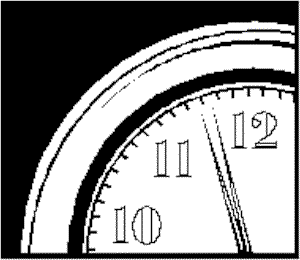
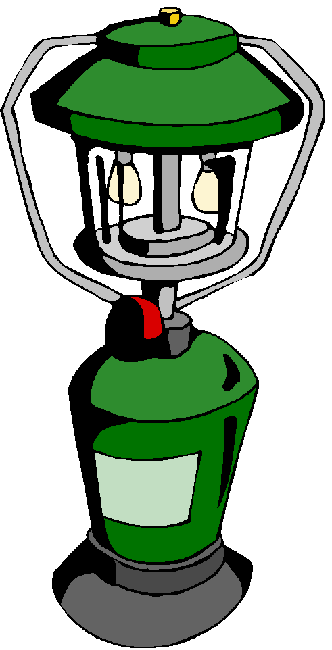 Thorium oxide coated gas lamp mantles used in ornamental gas lanterns and gas burning camping lamps
are radioactive. The thorium oxide is chosen because it can be raised to white heat without decomposing. However, the mantle does become extremely fragile and will
powder into a fine ash which can potentially be inhaled or ingested. Thorium is a natural alpha emitter with the potential for increasing lung tumours. Thorium
disintegrates to produce radon-220, an alpha particle emitting radioactive gas. Other uses of thorium include improving alloys of tungsten and magnesium. Thoriated
tungsten welding rods are partly vaporised in the arc welding process. Filaments in electronic tubes and television picture tubes have be coated in thorium oxides to produce
electrons more easily.
Thorium oxide coated gas lamp mantles used in ornamental gas lanterns and gas burning camping lamps
are radioactive. The thorium oxide is chosen because it can be raised to white heat without decomposing. However, the mantle does become extremely fragile and will
powder into a fine ash which can potentially be inhaled or ingested. Thorium is a natural alpha emitter with the potential for increasing lung tumours. Thorium
disintegrates to produce radon-220, an alpha particle emitting radioactive gas. Other uses of thorium include improving alloys of tungsten and magnesium. Thoriated
tungsten welding rods are partly vaporised in the arc welding process. Filaments in electronic tubes and television picture tubes have be coated in thorium oxides to produce
electrons more easily.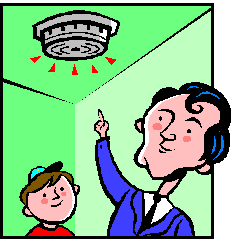 Most smoke detectors contain about 1 microcurie of Americium 241, an alpha emitter deposited
on a thin piece of metal foil surrounded by a metal shield. The alpha particles cannot escape unless the smoke detector is taken apart or vaporised in a fire, but some gamma
rays are emitted. A scanner reads about 30 counts per minute higher than the background average when place on top off a smoke alarm. The half-life of Am-241 is 458 years
and certainly will outlast the useful life of the smoke detector.
Most smoke detectors contain about 1 microcurie of Americium 241, an alpha emitter deposited
on a thin piece of metal foil surrounded by a metal shield. The alpha particles cannot escape unless the smoke detector is taken apart or vaporised in a fire, but some gamma
rays are emitted. A scanner reads about 30 counts per minute higher than the background average when place on top off a smoke alarm. The half-life of Am-241 is 458 years
and certainly will outlast the useful life of the smoke detector. Pottery glazes and art glass, some ceramic glazed jewelry and cloisonné enameled jewelry contain
high percentages of uranium oxides to produce bright yellows and oranges. Fiesta Red china dishes by Fiestaware produced through 1971 emit gamma and beta. Acidic foods
left in contact with this chinaware will dissolve small amounts of these radioactive elements which will be ingested. Enameled jewelry made with these glazes and worn next to
the skin is hazardous.
Pottery glazes and art glass, some ceramic glazed jewelry and cloisonné enameled jewelry contain
high percentages of uranium oxides to produce bright yellows and oranges. Fiesta Red china dishes by Fiestaware produced through 1971 emit gamma and beta. Acidic foods
left in contact with this chinaware will dissolve small amounts of these radioactive elements which will be ingested. Enameled jewelry made with these glazes and worn next to
the skin is hazardous.
